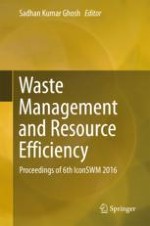2019 | OriginalPaper | Chapter
Use of Moringa oleifera Seeds as a Primary Coagulant in Textile Wastewater Treatment
Authors : Varun Agarwal, Divya Dixit, Mansi Jayeshbhai Bhatt
Published in: Waste Management and Resource Efficiency
Publisher: Springer Singapore
Activate our intelligent search to find suitable subject content or patents.
Select sections of text to find matching patents with Artificial Intelligence. powered by
Select sections of text to find additional relevant content using AI-assisted search. powered by
